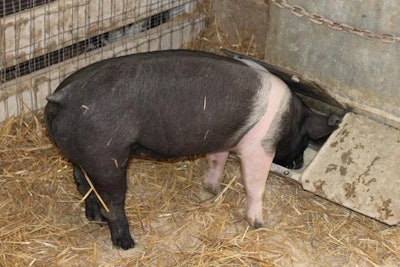
Pig and poultry production increased in the first quarter of this year, according to the latest statistics published by the Philippines Statistics Authority (PSA), as agricultural output generally increased by more than 5 percent after a series of quarterly declines.
Secretary of the Department of Agriculture, Emmanuel F. Piñol, said the agri-food sector had experienced good weather and favorable conditions over the period, and that the country’s farming is developing in the right direction. To achieve further growth, he called for easier access to finance and higher productivity.
Accounting for almost 17 percent of the national agricultural output, production by the livestock sector was 3.2 percent higher in the January-March period in 2017 than in the same period last year.
Pork heads Philippines’ livestock sub-sector
Hog production is the main contributor to the livestock sector in the Philippines, and it recorded a 3.5 percent increase in output for the first quarter of 2017 compared to previous year.
In local currency at constant prices, the sector’s output was worth 65.4 billion pesos (PHP; US$1.31 billion) or 9.4 percent more than a year ago.
According to PSA, traders were offering higher prices to hog farmers during the first quarter of this year, and there was increased demand from the hospitality sector.
Mixed fortunes for the poultry sector
Compared to the overall livestock sector, poultry output in the Philippines underperformed for the January-March period, with output up compared to the previous year by 2.2 percent at PHP52.9 billion (US$1.06 billion). The sector accounts for 15.4 percent of total national agricultural production.
Production increased for all the sectors – including for chicken meat, which had slumped in 2016 but increased by 1.5 percent for the first quarter of 2017.
There was a 3.1 percent rise in production of chicken eggs, which was attributed to an expansion in laying flocks in Central Visayas, Eastern Visayas and Soccsksargen (in south-central Mindanao).
Growing demand for local street-food delicacy, balut – boiled embryos eaten in the shell – is attributed to the 1.8 percent increase in duck egg production.
Receipts for chicken meat production were down by just over 0.7 percent. Other sectors performed better, with the value of duck meat output up by 8.4 percent, and duck and chickens eggs up by 6.3 and 11.0 percent, respectively.

















